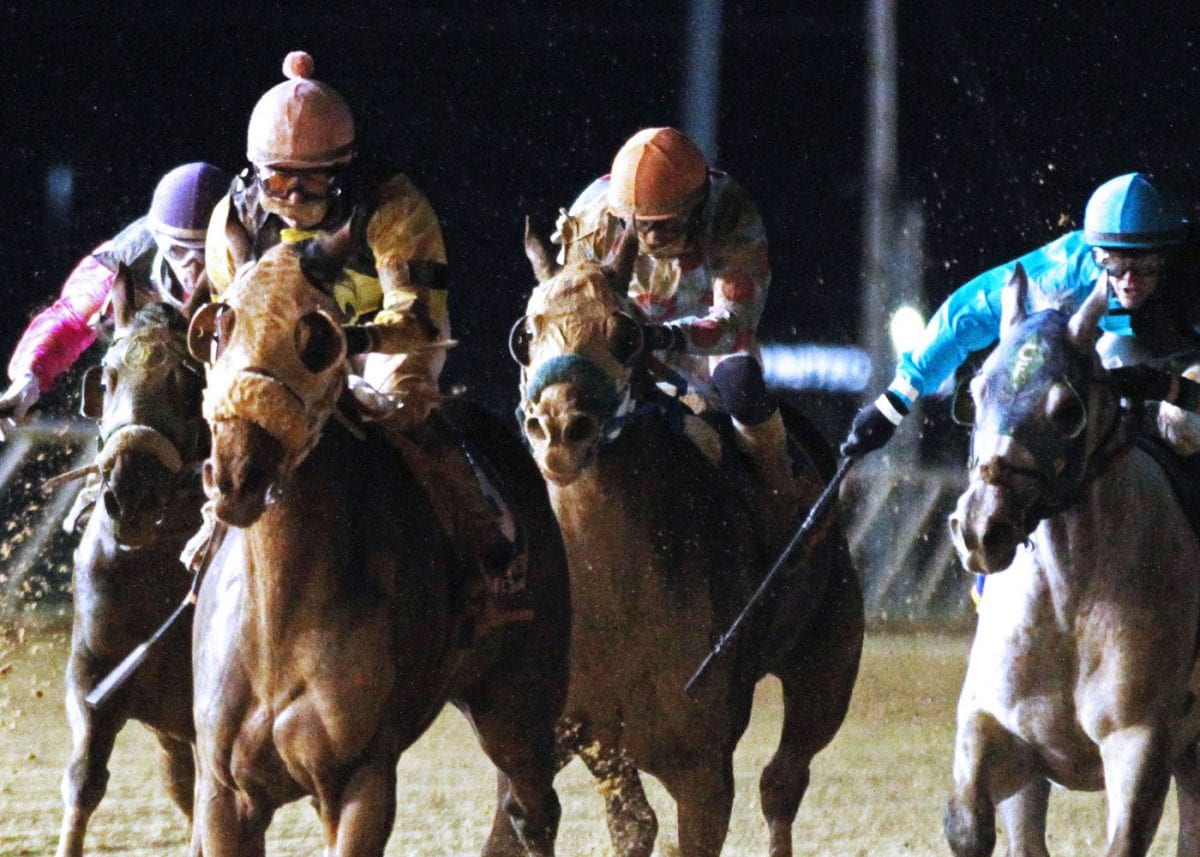by Bobby Zen
I’m at Hollywood Casino at Charles Town Races on Saturday, October 19, 2013, watching it begin to rain once again on stakes night. Last time I was here — in September for the Charles Town Oaks — it poured. I sense a theme developing.
It is West Virginia Breeders Classics night, with nine races worth over $1 million in purse money. I spent a good part of Friday handicapping this entire card and I’m hoping for a fast track to play on.
The rain clears off a little while before the first post, and it looks like it will be a good evening of racing. Race 1 has six runners, with two of them being heavily bet. They are likely choices, and I have both of them in my early Pick 3 (no win bet, as odds are too low). They run 1 – 2, and the payoff is $3.20. Okay, no big deal.
Race 2 has 10 runners and I have a couple of horses covered in the Pick 3, but one is bet down to $.20 on the dollar. I know if he wins, my Pick 3 payoffs will probably be low. And he wins. Hello, short payoffs.
Race 3 has 7 runners and I again have 2 horses covered in the Pick 3. The horse that is bet down to $.10 on the dollar wins, and I collect $2 on an $8 investment in the Pick 3.
Let’s call it is a lesson in money management at the track. Most people think they can pick a few winners, and make a bunch of money at the track (wouldn’t that be great?). But it is much tougher than that.
I know from my own past performance, I can pick 40% to 55% winners. Unfortunately, that’s the easy part.
The hard part is turning winners into profits. There are, in fact, five steps to putting yourself in position to make money while playing the ponies.
- Know how to handicap to separate contenders from horses with little or no chance in a race.
- Develop your own style of doing this and follow it through thick and thin. (my process is written in one of my books called ‘Bet To Win!’ found on Amazon or Barnes & Noble)
- Run a SWOT on your process (Strengths, weakness, opportunity, and threats). Understand your results of handicapping and betting to do this.
- Understand money management. How much money can you comfortably afford to lose? How much of this money should you bet on any given race?
- Have the discipline to follow your plan, and do it consistently. You might be surprised at the large number of players who fall apart on this step.
I am a big statistics fan; it’s just how my brain works. Given a set of circumstances, I start thinking “What are the odds of this or that happening? What is my best case scenario? What is my worst case scenario?” Therefore, a big part of my handicapping is done in statistics. How often does this horse win at this distance? At this track? Same questions about jockeys, trainers and so on.
Once I have my contenders identified, along with a few of my “sure things” (wink, wink), I start to look at the types of bets available to me. I am strictly a win or win/place bettor, and a Pick 3 or Pick 4 player. I know that those are my best chances of winning money, based on years of results that I review each year, along with tracks played.
Win bets are simple – are the odds better than what I think they should be based on the horses chances? The thought process with place bets is essentially the same, though you do have to know how to read the pools.
Multi-race bets, like the Pick 3 and Pick 4 are tougher, as you cannot compute the odds on upcoming races. All you can do is make an educated guess. If you think that heavy favorites will dominate those races, do NOT play.
So, why did I make the bet earlier? I was hoping to get a price horse or two in there. In the end, it is still a calculated risk.
That’s why we call it gambling.
For more from Bobby Zen, check out his website, www.bobbyzen.com!
(Featured image by Coady Photography.)







